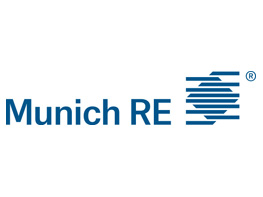Gallagher’s Kevin Woods on What Makes Rail ‘The Way of the Future’

Risk & Insurance recently sat down with Kevin Woods, Gallagher’s managing director of rail transportation, to discuss the opportunities and challenges facing the rail sector — and why he thinks rail is the safer, more affordable and more environmentally friendly choice.
What follows is a transcript of our conversation, edited for length and clarity.
Risk & Insurance: What’s your primary area of focus currently?
Kevin Woods: As the managing director of Gallagher’s rail practice, my focus is twofold. First, I manage my own clients and book of business. Second, I support producers globally who have prospects in the rail industry seeking risk management solutions.
My team and I are involved in anything rail-related. This includes freight railroads, passenger railroads of all kinds (commuter, light rail, trolleys, excursions), and businesses that touch rail, such as transload operations, warehousing and rail construction.
On a day-to-day basis, we deploy our expertise to assist producers with their rail industry clients or prospects. I have a team of people on both the production and service sides to support these efforts, ensuring we provide comprehensive risk management solutions tailored to the unique needs of the rail sector.
R&I: What types of clients from non-rail sectors are coming to you for rail-related expertise?
KW: We’re seeing a lot of producers from the manufacturing or construction sectors whose clients weren’t necessarily in need of rail expertise before, but now that is changing. For example, manufacturers who want to start shipping their products via rail, or contractors who find the civil work they’re doing is not as robust as it once was and have started working in the rail industry or around railroads to fill those work gaps.
Unless these producers are dedicated to rail, they often come to us saying, “I’ve got this exposure. I don’t know what to do with it. I need to help my client.”
R&I: What are some of the macro trends you’ve observed in the rail industry over the past five years? What significant shifts have you noticed?
KW: We’ve seen a growing openness among people to the possibility of shipping via rail, moving away from the traditional focus on short-haul or long-haul trucking. This shift can be attributed to several factors, including the rail industry’s environmental friendliness and its potential for cost savings.
For manufacturers looking to keep costs down while distributing their products, shipping more via rail at a lower per-unit price is an attractive option. Aggressive railroads, particularly short lines, are proactively approaching industries located near their tracks, offering to build spurs to their facilities and facilitate rail car loading and unloading.
This has led to railroads signing long-term contracts and agreements with new clients. Many railroads now have market and real estate development departments dedicated to marketing themselves as shippers to these new industries.
Looking back, approximately 90% of the producers who have contacted me fit this description. Their clients are either starting to ship via rail or expanding their existing rail shipping operations, leading to increased demand for track additions, rail car purchases and leases as they broaden their horizons.
R&I: Rail predates the automobile by almost a century. Does it deserve its reputation for being a more old-fashioned mode of transportation — at least compared to something like self-driving vehicles?
KW: I would definitely say rail transportation is the way of the future. Historically, trains have been much safer from a transportation standpoint.
Rail also causes less damage to roads and fewer accidents compared to commercial trucks. The trucking industry continues to battle unfavorable legal conditions, and for those who do not utilize rail transportation, there is often a belief that it will be costly or that there won’t be a nearby railroad track.
However, if you have someone sit down with you and explain how it all works and what your costs could look like, you’ll often find that the railroad will come in and build the track for you. They’ll own and maintain the track, so you won’t have any responsibilities. At that point, you lease or buy your cars, and you have access. It’s a win-win situation.
R&I: What do you wish people who don’t work in rail understood better about the industry?
KW: How green the industry really is, and the push to become even more green. The rail industry is constantly looking for ways to reduce its environmental impact, and from a greenhouse emissions perspective, it’s significantly better for the environment compared to other modes of transportation.
A lot of passenger rail lines are transitioning to electric and exploring hydrogen locomotives, although there are still some challenges to overcome, such as ensuring that these new technologies can match the power and pulling capacity of traditional diesel locomotives.
The rail industry as a whole embraces new technology, just like it did with positive train control. PTC has been great for the industry and from an insurance standpoint. It’s a positive talking point with the markets, and while it’s difficult to quantify the accidents prevented, we know that it’s working as intended.
Sometimes, the media tends to focus on rail accidents, which are highly publicized despite the fact that they’re relatively infrequent. This can create a negative perception among the general public. However, the rail industry remains committed to safety and sustainability, and is constantly seeking ways to improve and minimize its environmental footprint.
R&I: My sense is that for the rail industry in particular, the move to greener energy is a pretty monumental transition. What’s your perspective on this?
KW: The rail industry, especially passenger rail operations, is very open to transitioning to greener energy sources. Electric lines are becoming increasingly common for inner-city rail, as they are safe, efficient and well-suited for moving people. They’re not hauling long trains; they consist of just three or four cars.
Even for commuter operations, the industry is exploring greener locomotive options with lower emissions. There are several manufacturers at the forefront of this space, and as the technology advances, more rail lines are expected to adopt it.
The rail industry has always been a leader in environmental sustainability, and this is a frequent topic of discussion at rail conferences, particularly those organized by APTA [American Public Transportation Association]. The transition to greener energy is largely driven by environmental considerations, and the industry remains committed to making progress in this area.
R&I: What about in freight, where rail moves more tonnage and over longer distances? What challenges do railroads face in the process of replacing their locomotives?
KW: Within the railroad industry, there’s a significant push to adopt more environmentally friendly locomotives, but the transition is expected to be slow due to the high costs involved. Replacing a single locomotive is expensive, let alone an entire fleet. This poses a particularly tough challenge for small independently owned and operated railroads, often run by families or individuals who may struggle to afford the switch to greener technology.
Short line railroads often purchase locomotives secondhand from Class I railroads when the locomotives are around 20 years old. These locomotives then undergo refurbishment, which can extend their lifespan to 50 years or more.
The refurbishment process involves rebuilding the engines, chassis and wheel sets. This practice is incredibly environmentally friendly, as it eliminates the need to replace the entire locomotive. By extending the life of these machines, short line railroads significantly reduce their environmental impact and contribute to sustainability in the transportation industry.
While the appetite for change is strong, the financial realities of the industry dictate that progress will be gradual. Building new eco-friendly locomotives takes time and resources, which can be especially scarce for smaller operators.
R&I: Where is the insurance industry underprepared?
KW: As a broker, my primary concern is ensuring that I have the capacity to provide my clients with coverage at an affordable price. It’s my job to help them sleep at night, knowing they have the necessary protections in place.
The rail industry is in a slightly better position compared to others. Underwriters in this space tend to know their clients intimately and meet with them face-to-face multiple times a year, and we as brokers are involved in many of these conversations.
Capacity is always a concern because markets constantly enter and leave this space. However, there are core underwriters who have always been there and likely always will be, even if they move from carrier to carrier. When an experienced rail underwriter joins a company that lacks rail expertise, it opens up the possibility for that company to start writing rail business.
As brokers, we’re constantly working to ensure that we have the capacity our clients need. For example, we anticipate that passenger railroads will require additional capacity over the next couple of years. To prepare for this, we’re already talking to carriers and underwriters about what that will look like two years from now, so that when a client needs an extra $50 million or $80 million in capacity, we’ll be ready for them.
R&I: What are some success stories in the rail insurance industry that other brokers should try to emulate?
KW: If I were to give advice to another broker, it would be to cultivate relationships and ensure that communication channels remain constantly open. It’s crucial to know your client and understand their risks thoroughly.
While you can never tell their story for them, you can help them craft a compelling narrative. No one will be as passionate about their business as they are, so it’s essential to assist them in effectively conveying their culture, particularly their safety culture, on paper.
By relaying this information to the underwriters, they gain a clear understanding of the exposures and risks involved. This enables them to provide a fair rate, allowing the carriers to make a profit while ensuring that the client has the necessary coverage. &










